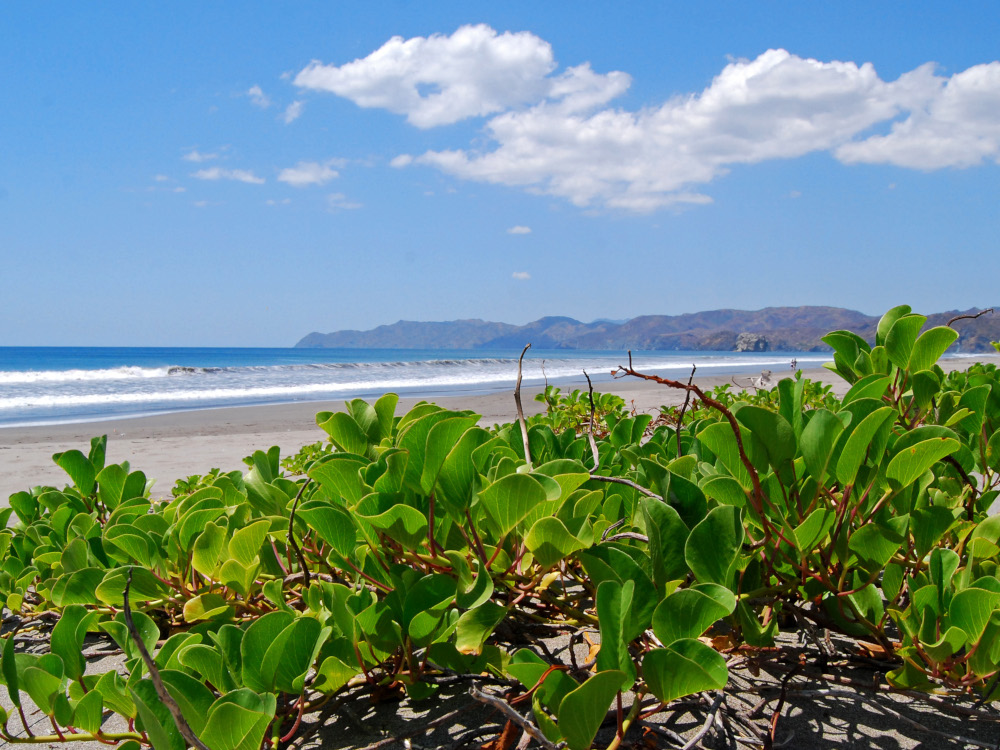Santa Rosa National Park

Costa Rica has a priceless natural heritage, its natural landscapes and its policies in favour of nature conservation have created the perfect climate for Costa Rica to enjoy some of the most spectacular fauna and flora in the world.
READ ALSO: Adventure Travel in Costa Rica: everything you need to know "
The Santa Rosa National Park is one of these natural enclaves where we can enjoy the most of an exuberant and varied natural landscape, where we can find extensive virgin beaches of white sand, tropical forests and savannah-like landscapes.
It is the oldest natural park in Costa Rica and was founded in 1971, although it has been extended several times since then. In 1979 the Murciélago section was added, land expropriated from the Nicaraguan ex-dictator Anastasio Somoza, and later the space between the Murciélago section and the original 1971 park was added to the natural park. In this way we can enjoy an extensive protected region of some 50,000 hectares.
Beaches in the Gulfs of Santa Elena Costa Rica
The beaches are located between the gulfs of Santa Elena and Papagayo, where we find important coral reefs. Throughout the park we can change climatology and environment, surprisingly we can see mangrove swamps and reach areas where cactus and thorny vegetation abound. Consequently, the variety of fauna is astonishing, we highlight the more than 5000 types of diurnal and nocturnal butterflies that we can see, as well as mammals such as jaguars, anteaters, howler monkeys and other species such as iguanas, coatis, etc. The spectacular fauna never ceases to amaze the visitor. Up to three types of turtles come to the beaches of Santa Rosa to lay their eggs and complete their reproduction process.
We can find accommodation at the campsite located in La Casona and La Casona is also the headquarters of the administration of the Santa Rosa Natural Park.Santa Rosa National Park
Cultural visits to Costa Rica
In these surroundings you not only breathe nature but also a very important historical place for the people of Costa Rica, the Hacienda La Casona, nowadays preserved as a museum and a reminder of the battles fought there. It was here that Walter's mercenary army was repulsed in 1856 where nearly 9000 Central American volunteers participated in the battle and prevented the conquest of William Walter's Yankee filibusters. Later in 1955 a fierce resistance against Somoza's invasion attempt took place here.
In the area we can make a beautiful excursion along a path called Sendero Indio Desnudo (Naked Indian Trail), so called because of the colour of the landscape, which tinges the entire route with a red colour, similar to the skin of an Indian. The trail is a little more than 1 km long and goes deep into the dry tropical forest.
We can enjoy other longer trails, such as the Los Patos trail, the Valle Naranjo trail or the Palo Seco trail. On these trails we can observe the fauna of the area and enjoy the natural life of Costa Rica.
Santa Rosa National Park in Costa Rica
The Santa Rosa National Park has beautiful beaches which we can access with an appropriate vehicle (4×4) leaving from La Casona we arrive at the Gulf of Papagayo between the two points is only 13 km. During the journey there are some detours where we can access different points of the park as Naranjo beach, this is a very important enclave to practice the water sport of surfing, is internationally recognized as one of the best places in Central America for surfing. Not far away is an emblematic place for surf lovers, the Peña Bruja. Here we find a lagoon with a multitude of aquatic birds. And to the north we find Playa Nancite and in the northern part, Estero Real, we find a place where a hundred thousand turtles come to lay their eggs in the months of September to October.
The northern section of the peninsula is the Murciélago section, a place with a turbulent past, with CIA camps to support the Nicaraguan Contras and airports to support the Sandinistas, but amidst all this dark and sinister past are pristine beaches, coral reefs and jungle forests. Playa Blanca is one of the most beautiful beaches in Costa Rica.
If you are a brave adventurer and want to get to know much quieter beaches only accessible by sea, you can do so by going to: Cabo Santa Elena, Playa Coloradas or Bahía Portero Grande, the latter is another surfer's paradise. In these places there are no infrastructures or shops so you will have to bring everything you need, such as food and water.
The Santa Rosa National Park has 6 camping sites where you can spend the night, and in La Casona there is also a campsite with bathrooms and in good conditions. For any kind of information it is best to go to La Casona where the park administrators have set up information points for tourists.
Don't miss any adventure in the Pyrenees!
